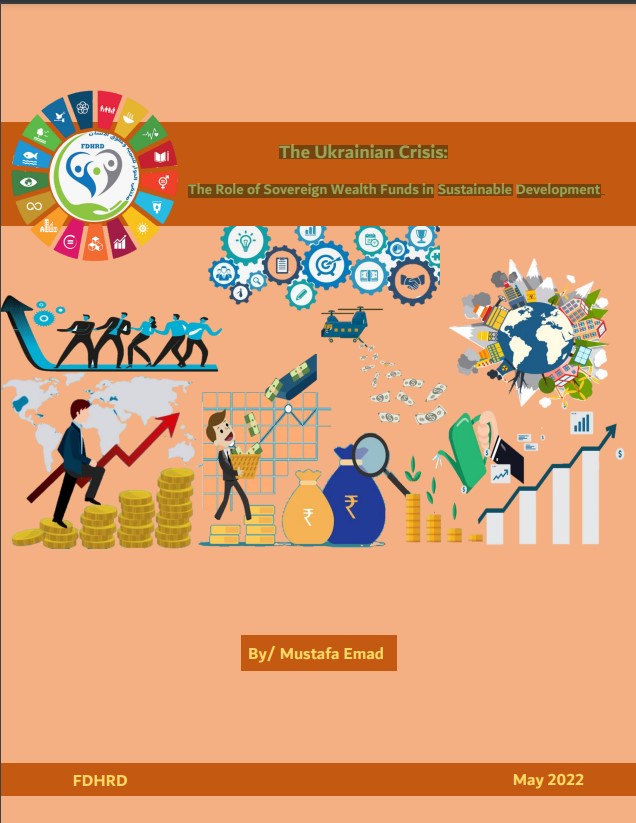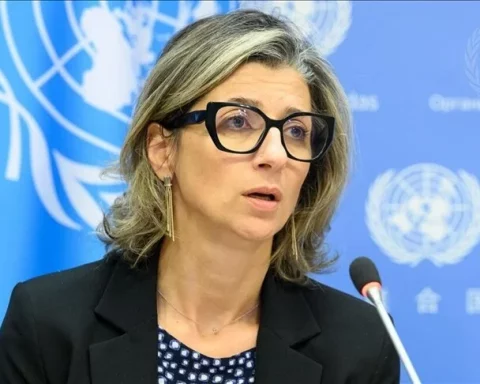Press Release
…………………………………………………………………………………..
Today, Monday, May 16, 2022, the Unit of Research and Studies at the Forum for Development and Human Rights Dialogue (FDHRD) issued a new report entitled: (The Ukrainian Crisis: The Role of Sovereign Wealth Funds in Sustainable Development).
The report emphasized that there is significant scope for Sovereign Wealth Funds (SWFs) to invest in sustainable development sectors and support the Sustainable Development Goals (SDGs). What makes sovereign funds attractive for sustainable development financing is their long-term and broad-based nature at their core.
The report addressed a number of themes, including:
First: Defining the Sovereign Wealth Funds (SWFs)
The report defined the SWF as “a state-owned investment fund consisting of government-generated money, which is often derived from surplus state reserves in order to provide a benefit to the state’s economy and its citizens.” The report concluded that the Middle East contains the largest number of SWFs (28 funds). Four SWFs belong to the Middle East among the ten richest sovereign funds- in terms of assets.
Second: Impact of SWFs on the Sustainable Development
The report divided the SDGs into four groups in terms of the opportunities for sovereign funds to invest in their achievement; There is a set of SDGs for the real economy that can be highly invested; a set of climate-related SDGs in which there is little purely investment; a set of social SDGs that are difficult for SWFs to reach in a programmatic way; and a set of SDGs for sustainable infrastructure that can be accessed as investment opportunities.
Third: The Repercussions of the Russian-Ukrainian war on the Effectiveness of SWFs
Since the beginning of the war in Ukraine, Western countries have imposed economic sanctions on Russia to tighten the screws on it, most notably removing it from the Swift payment system. The war has squeezed global liquidity, especially for developing countries, as investors flock to assets seen as less risky, and the cost of credit has actually risen since the conflict began, with bond yields soaring (an average of 36 basis points).
The first quarterly losses for the world’s largest sovereign fund since the outbreak of the Covid-19 pandemic in April, when the Norwegian sovereign wealth fund (with $3.1 trillion in assets) announced losses of $74 billion during the first quarter of 2022 (a 9.4% decline in its assets).
SWFs in the Gulf states are facing huge losses due to the decline in asset prices in Russia since the invasion of Ukraine. However, Gulf SWFs insist on continuing to invest in the Russian markets at the expense of European and American investments that withdrew from Russia in implementation of the sanctions. Also, the rise in global oil prices helped the Gulf SWFs not to be significantly affected by the losses that affect all the major SWFs, and even to achieve unexpected gains.
The report noted that the conflict in Ukraine could widen the annual $3.6 trillion gap in financing needed to achieve the SDGs and worsen the debt burden in many developing countries. The war has squeezed global liquidity, especially for developing countries, as investors flock to assets seen as less risky, and the cost of credit has actually risen since the conflict began, with bond yields soaring (an average of 36 basis points).
The report concluded by emphasizing that in the longer term, the war could fundamentally alter the global economic and geopolitical system if energy trade were transformed, supply chains were reconfigured, payment networks were fragmented, and countries rethought their reserve currency holdings.








